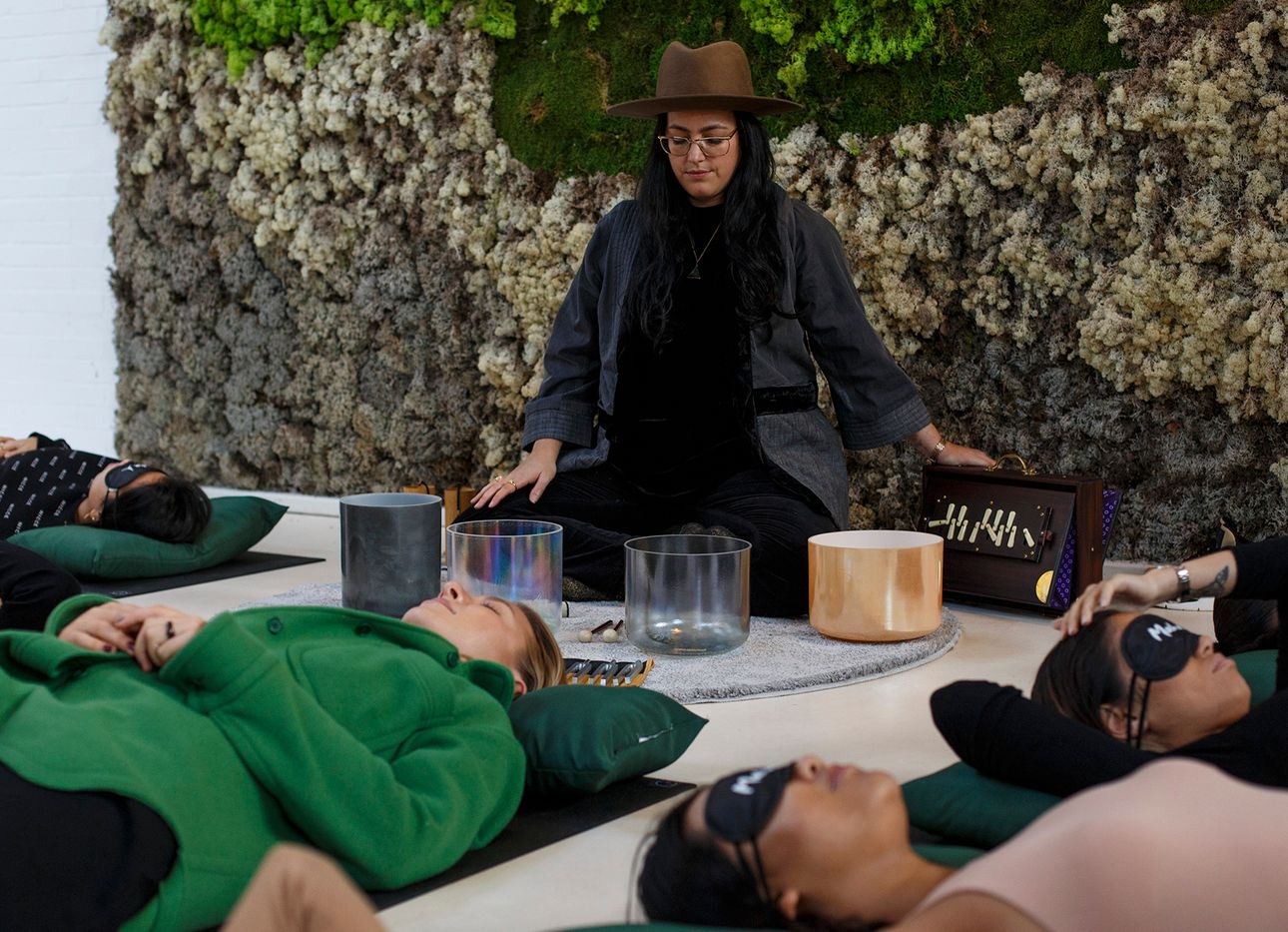
Sound Therapist Sara Auster’s “Deep Listening” Playlist
Sara Auster, a New York–based musician turned sound therapist, and author of the new book Sound Bath: Meditate, Heal, and Connect Through Listening (Simon & Schuster), leads us through meditation with a few songs to unwind to. “We listen to help transform and transport,” she says, “to examine and understand the space around us and within. We listen to learn, to express, and to help manifest our purpose. Through listening, we share and build connections based on empathy and openness.”
"Dreams,” Kelsey Lu
“In my book, I focus on deep listening, or the practice of suspending reactive thinking and opening your awareness to the unknown and unexpected. Less structured sounds help you listen without judgement, removing typical reactions and analysis, allowing the listener to go deeper into their own experience. The way the sounds build in ‘Dreams’ helps to slowly transport the listener to an otherworldly place, ideal for when you want to drift off or zone out.”
"The First Garden,” Stevie Wonder
“This is another transportive track, for when you desire the feeling of connecting to nature. Turn this instrumental on as a soothing balm after a day in a sonic environment bombarded with traffic, sirens, and construction noises.”
"Etude No. 2,” Philip Glass
“To me, this is the sound of a sunrise, but to you, it might evoke a walk on the beach or favorite childhood memory. Your personal connection to the pitches, frequencies, and drones will be shaded by your life experience and the intention behind your listening. Beauty is in the ear of the beholder.”
"Awake,” Sara Auster
"This is a track from my sound bath record Namora, designed to accompany meditation, relaxation, creative, and deep listening practices. Listening to these particular sounds wherever you are can transform your space into one of contemplation, reflection, and relaxation.”
Here, some extra guidance from Auster to enhance your “deep listening” experience:
Step 1
Get comfortable, either seated or lying down. Choose a position that you can be still in for about 20 minutes.
Step 2
Close your eyes (or cover them with an eye mask) and take three deep breaths. Inhale for four counts through the nose and exhale through the mouth. Then return to the natural breath.
Step 3
Turn your attention to your listening. Focus on the sound. The contrast it leaves in the room will fade away.
Step 4
Let the sounds you hear anchor you in the present moment. Try not to get caught up in judging what you hear or analyzing the sounds. Just listen, observe, and experience them. If you become restless or other thoughts come in, acknowledge and allow them, but do not react to them. Stick with this for the length of the recording.
Step 5
Become aware of the space around you. Consciously become aware of the space in front, behind, and to the sides—even above and below. Allow yourself to feel as if your mind is expanding into the space surrounding, even expanding outside of the room.
Step 6
When the recording is complete, allow yourself to sit in silence for one to two minutes.
Step 7
Gently make small movements through your body, and slowly open your eyes. Observe how your awareness has shifted from the beginning of the practice.